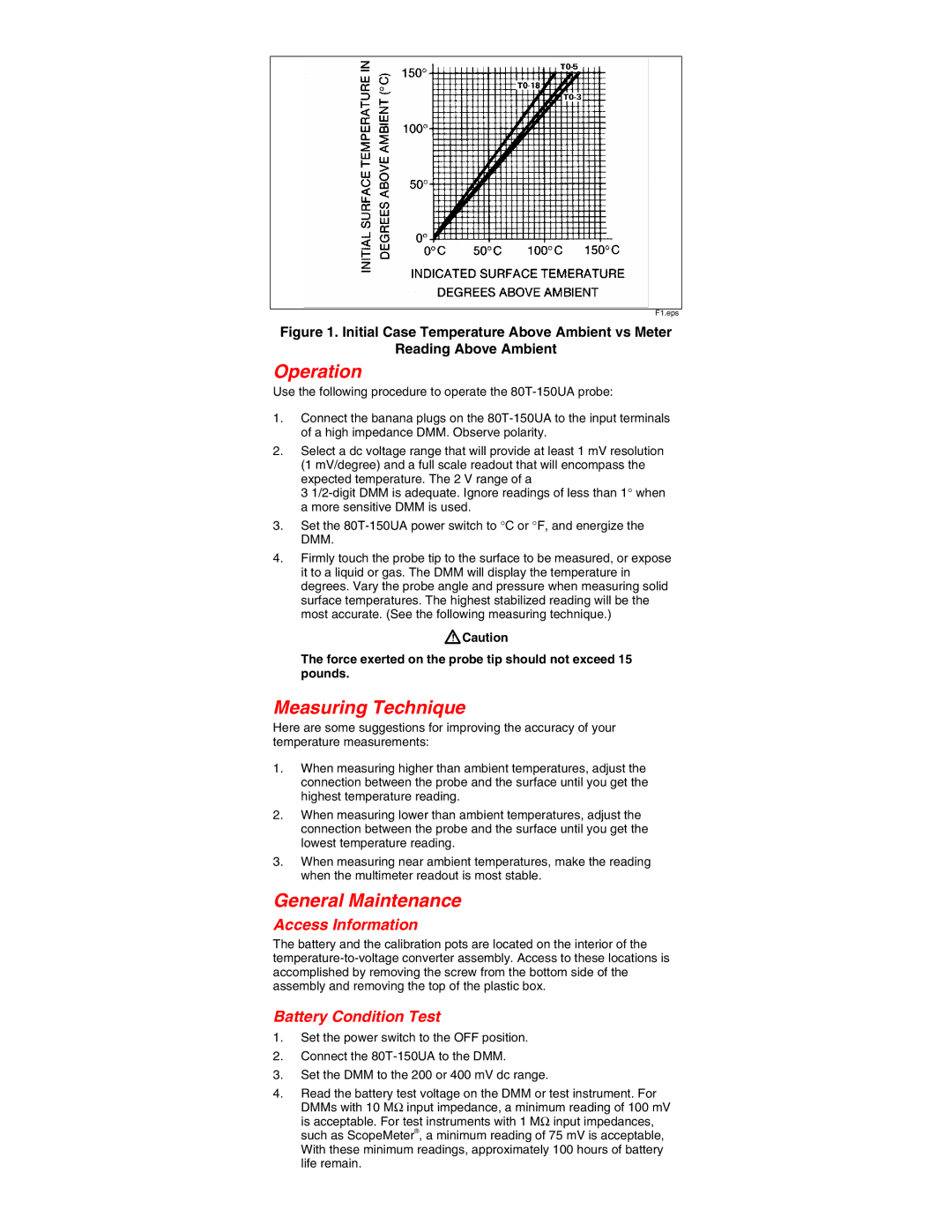
F1.eps
Figure 1. Initial Case Temperature Above Ambient vs Meter
Reading Above Ambient
Operation
Use the following procedure to operate the
1.Connect the banana plugs on the
2.Select a dc voltage range that will provide at least 1 mV resolution (1 mV/degree) and a full scale readout that will encompass the
expected temperature. The 2 V range of a
3
3.Set the
4.Firmly touch the probe tip to the surface to be measured, or expose it to a liquid or gas. The DMM will display the temperature in degrees. Vary the probe angle and pressure when measuring solid surface temperatures. The highest stabilized reading will be the most accurate. (See the following measuring technique.)
WCaution
The force exerted on the probe tip should not exceed 15 pounds.
Measuring Technique
Here are some suggestions for improving the accuracy of your temperature measurements:
1.When measuring higher than ambient temperatures, adjust the connection between the probe and the surface until you get the highest temperature reading.
2.When measuring lower than ambient temperatures, adjust the connection between the probe and the surface until you get the lowest temperature reading.
3.When measuring near ambient temperatures, make the reading when the multimeter readout is most stable.
General Maintenance
Access Information
The battery and the calibration pots are located on the interior of the
Battery Condition Test
1.Set the power switch to the OFF position.
2.Connect the
3.Set the DMM to the 200 or 400 mV dc range.
4.Read the battery test voltage on the DMM or test instrument. For DMMs with 10 MΩ input impedance, a minimum reading of 100 mV is acceptable. For test instruments with 1 MΩ input impedances, such as ScopeMeter®, a minimum reading of 75 mV is acceptable, With these minimum readings, approximately 100 hours of battery life remain.
